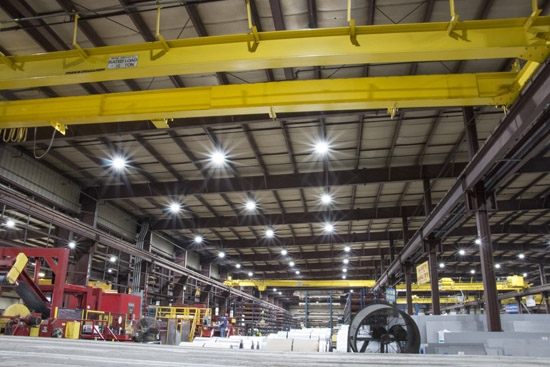Optimizing LED Lamps for Industrial Use Made Simple
Optimizing LED Lamps for Industrial Use Made Simple
Blog Article
The demand for energy-efficient lighting continues to rise across the industrial sector, and LED lighting leads the way.
From technical specs to application guidance, we’ll help you understand what makes one solution better than another.
Let’s start by looking at the reasons why sourcing LED lighting wholesale is not only cost-effective—but also the smarter long-term choice for industrial facilities.
Why Wholesale LED Makes Sense for Industrial Buyers
Buying LED lamps at wholesale prices offers multiple advantages for businesses managing large-scale lighting needs.
LEDs already offer superior lifespan and energy efficiency over traditional lighting.
Another reason to buy wholesale is flexibility: you can choose from a range of models—like high bay LED EVO—with varying specs suited to different areas of your facility.

Why Industrial Facilities Should Upgrade to LED Lighting
LEDs consume up to 75% less energy than traditional metal halide or fluorescent systems, significantly cutting monthly utility bills.
This is especially critical in areas with heavy equipment, forklifts, or complex production lines.
Industrial LEDs also require less maintenance, thanks to their long lifespan—often exceeding 50,000 hours.
Why Choose High Bay LED Lighting for Warehouses
These powerful lights deliver focused, even illumination across wide areas, ensuring that workspaces remain well-lit and compliant with safety standards.
This not only improves visibility but also enhances worker comfort and reduces eye strain, boosting overall productivity.
Advanced models, like the High Bay LED EVO, combine cutting-edge optics, durable construction, and smart features such as dimming or sensor integration.
Key Features of High Bay LED EVO Fixtures
The High Bay LED EVO represents the next generation of industrial lighting.
What sets the EVO series apart is its advanced thermal management system, ensuring a longer lifespan even in high-temperature environments.
Investing in High Bay LED EVO fixtures not only cuts operating costs but also supports sustainability goals by lowering carbon footprints.

What to Look for in an LED Importer
When evaluating potential partners, check their certifications, product warranties, and track record with industrial clients.
This guarantees faster delivery times and access leia mais to the latest technologies, such as High Bay LED EVO or specialized industrial lighting solutions.
A good supplier doesn’t just sell products—they help you plan, install, and maintain your lighting systems effectively.
Final Thoughts on Choosing the Right LED Lighting for Your Facility
Whether outfitting a warehouse, factory, or logistics center, LED solutions offer unbeatable energy savings, superior performance, and lower maintenance costs.
Selecting the right LED supplier or importer ensures you gain access to cutting-edge products, expert guidance, and reliable after-sales support.
By acting now, you position your business at the forefront of innovation, reaping financial and environmental benefits for years to come.
Common Questions About LED Lighting for Warehouses
What are the benefits of buying LED lighting wholesale?
It’s especially cost-effective for large-scale industrial projects with high lighting demands.
What is a high bay LED light?
High bay LED lights are designed for spaces with ceilings over 20 feet, such as warehouses, factories, and gymnasiums.
What makes the High Bay LED EVO different?
The High Bay LED EVO offers advanced thermal management, flexible mounting, smart lighting integration, and superior energy efficiency.
Why does the right importer matter?
A good importer ensures product quality, compliance, fast delivery, and long-term partnership.
How much can I save by switching to industrial LED lighting?
Industrial LED upgrades can reduce energy costs by up to 75% and maintenance costs by up to 50%.
Report this page